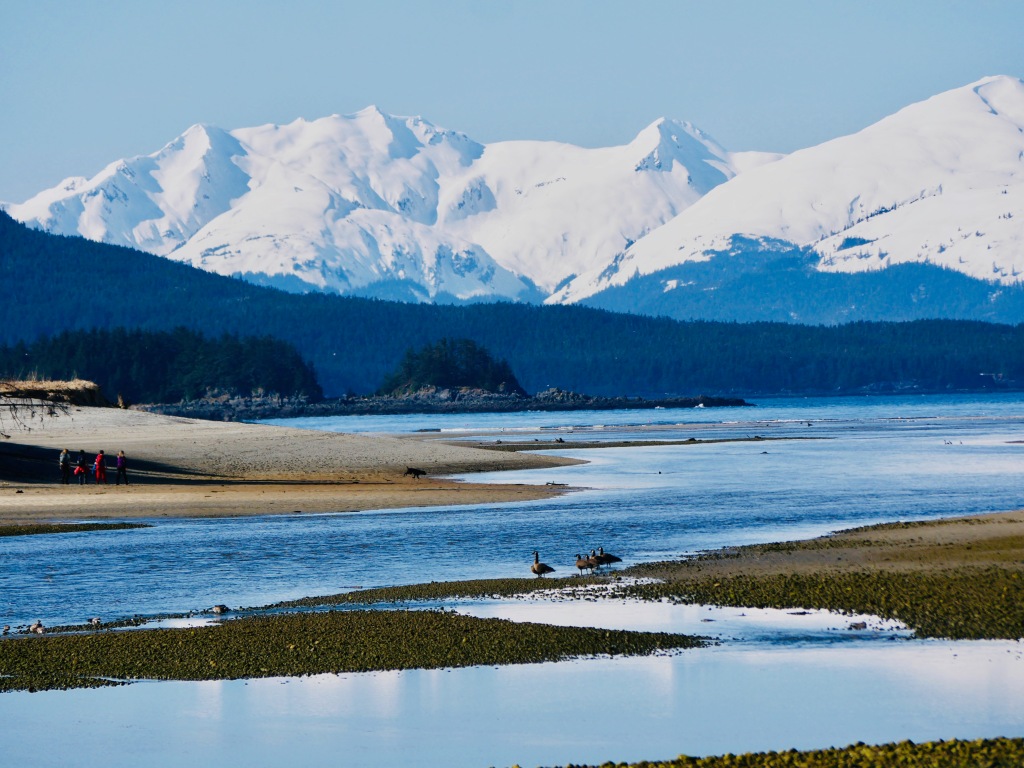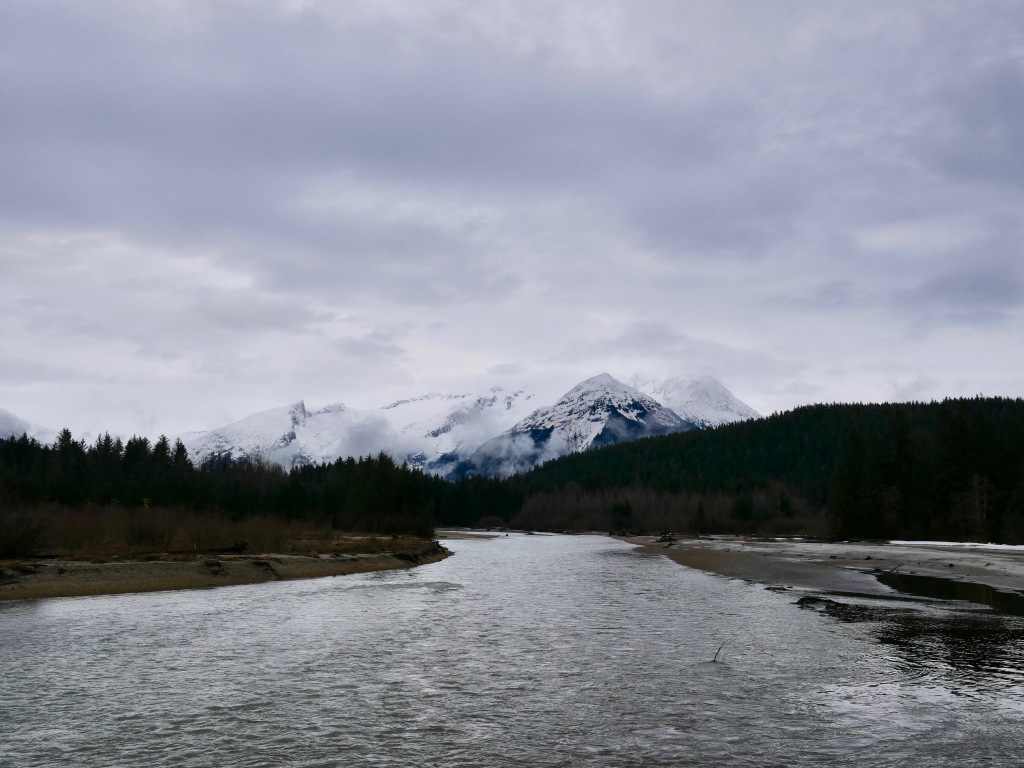
People in this tiny, Alaskan capital city are had a dogs. Folks who haven’t owned a puppy since their own childhood started buying them when Covid force them to work from home. Today, a six or eight month old pup accompanies every human walking down Eagle River.

Perhaps to teach all the new dogs a lesson, Aki ignores them. I try to do the same. It’s low tide so a great deal of the river delta is exposed. For this reason I am surprised to see hundreds of Canada geese feeding nearby.

Aki and I leave a river meadow and walk a little closer to the geese cubby. Several 100 feet down the river, I spot an immature bald eagle sleeping on the beach. It’s just a few feet from the river. Many dogs would charge the goose, Aki ignores it. I swing wide around it rather than get too close. Eagles need their space. As I watch it, a human couple with a dog on a leash, walk close enough to the eagle to wake it up. It still doesn’t move, which makes me wonder it is sick or undernourished.

I tell the human couple that eagles need more space than they are currently giving this one. One of the humans smiles and says that always give eagles this much space. They continue walking towards the ocean, flushing geese and ducks into flight on the way. I apologize to the eagle and tell it that more invasive couples would soon be walking past it. It appears to stare at the couple but doesn’t fly off. I take a few more photos and turn my back, When I turn around again, the immature eagle is gone.

In a minute or two a patch of geese that the friendly, if obtuse humans flushed off the beach, fly back to their original spot. As Aki and I sit where we can enjoy the sunshine, a series of hikers with dogs walk toward to geese. When a new couple approaches, the geese takeoff, honking, as they had when the first human/dog gang approached them. A few minutes after those people pass, the geese return to their spot. This happened three or four times before there is a break in human visitors. No wonder the Canada geese population seems to be exploding. They are wise, like a fox, but hide their wisdom by sounding like fools when they fly away.










































